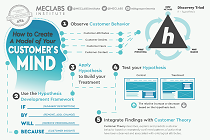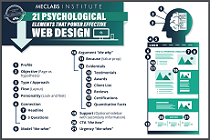January 17, 2001
Article
|
SUMMARY:
No summary available
|
|
*** MarketingSherpa’s FinancialMarketingBiz.com ***
Practical News & Case Studies on Marketing Financial Products
& Services Online
January 17, 2000 - Vol. II, Issue 3
Reading a forwarded copy??? Get your own free weekly
subscription at: http://www.financialmarketingbiz.com
1. NEWS: BUYandHOLD.com, First Union, ShareBuilder, Wells
Fargo, CSFBdirect, Ameritrade, Datek, Bank of America, E-LOAN,
Morgan OnLine
2. More MarketingSherpa Headlines
3. CASE STUDY: Fidelity’s Insurance.com Grows Traffic and
Consumer Trust With Regularly Updated Expert Content
4. EXCLUSIVE INTERVIEW: Nina Castro Owens of Cap Gemini Ernst
& Young on The Electronic Financial Services Marketing Wars
*****
NEWS
*****
(((((((( )))))))))
Can You Do It Within Your Budget?
In 2000 Ameritrade spent an estimated $188 million on
marketing, according to Robertson Stephens. Can you do the
same? eFinanceMarketing helps companies of all sizes map out
winning, cost-effective and profitable marketing
strategies.
http://www.efinancemarketing.com
(((((((((((((((((((((((((())))))))))))))))))))))))))
*BUYandHOLD.com Snags First Union, ShareBuilder Gets Wells
Fargo
SHARE AND SHARE ALIKE: BUYandHOLD.com, an online brokerage
offering dollar-based investing and fractional share ownership
to investors, has signed an agreement with First Union to
offer investing and shareholder services to the bank’s
transfer agency clients. Separately, BUYandHOLD.com
competitor ShareBuilder Securities, a subsidiary of Netstock
Corporation, inked a deal with Wells Fargo Online Brokerage to
offer its dollar-based investing product, ShareBuilder, to
Wells Fargo’s online retail customers.
http://www.buyandhold.com
http://www.firstunion.com/business/institutional
http://www.sharebuilder.com
http://invest.wellsfargo.com
*DLJdirect Became CSFBdirect on January 15, 2001
NEW LOOK AND FEEL: Now that DLJdirect’s parent company,
Donaldson, Lufkin & Jenrette, was acquired by Credit Suisse
First Boston on Nov 3 2000, it was only a matter of time
before the online brokerage would change its name to
CSFBdirect, as had been previously announced. The effective
date of the new name was Jan 15 2001. The upgrade and
rebranding campaign for the transitioning to the new name will
emphasize three attributes of the brokerage service:
research, speed, and customer service. The new CSFBdirect
advertising campaign, created by Kirshenbaum Bond & Partners,
“invites consumers and sophisticated, self-directed investors
to take another look at us,” explained Debra Isenberg, Chief
Marketing Officer of CSFBdirect, in a press release.
But this isn’t the first time that DLJdirect has had to tackle
a name change. Some may recall the online brokerage’s
predecessor PCFN, quietly launched in 1988 by Pershing, the
securities clearing division of DLJ, and later christened
DLJdirect in summer 1997.
http://www.csfbdirect.com
http://www.kb.com
*Morgan OnLine to Cut 150 Jobs
OUCH: About 150 employees in sales, marketing, and other
“client acquisition” roles at Morgan OnLine are being laid
off. Morgan OnLine, launched in March 2000 to cater to a
wealthy clientele, is operated by J.P. Morgan Chase, the
merged bank created on Dec 31.
===NUMBERS===
*Despite Q4 Growth, Ameritrade Announces Layoffs
For Dec 2000, 52,000 new accounts were opened, a 30% increase
from new accounts opened in Nov 2000. Yet for Q4 2000,
Ameritrade opened 134,000 new accounts, matching new accounts
opened during the same period last year. Also, 115,000 trades
per day were executed in Dec 2000, a 10% increase from Dec
1999. However, due to slower-than-expected growth, Ameritrade
announced plans to cut 230 full-time positions and 120 part-
time positions, mostly from call centers in Omaha, Neb., and
Ft. Worth, Tex. This is in addition to 200 temporary
customer-service workers laid off in early December.
http://www.ameritrade.com
*Datek’s Average Daily Trades Up To 106,143, Accounts Up To
692,065, Assets Down To $10.8 Billion
Datek’s average online trades per day in Q4 2000 were 106,143,
up 9% from Q3 2000 and 31% from Q4 1999. Customer accounts
increased to 692,065, 11% over Q3 2000 and 104% over Q4 1999.
Customer assets held in custody at the end of Q4 2000 were
$10.8 billion, compared with $14.8 billion for Q3 2000 and
$10.8 billion for Q4 1999.
http://www.datek.com
*Bank of America Hits the 3 Million Mark
Bank of America exceeded 3 million online banking customers,
representing over 20% of its checking account customer base.
“It took us over 10 years to reach 2 million online banking
customers and only nine months to add 1 million more,” says
Jeanine Brown of Bank of America’s Interactive Banking Group.
*E-LOAN’s Auto Loan Volume Surges 190%
Yes, people really are getting car loans online. Online
lender E-LOAN originated 15,671 auto loans in Q4 2000,
totaling $320 million, an increase of 190% over Q4 1999 and an
increase of 70% over Q3 2000.
http://www.e-loan.com
===MEDIA BUY OF THE WEEK===
P&I Online
http://www.pionline.com
Where else can you reach an audience with an average income of
$338,000 and an average net worth of $1.5 million? Pensions &
Investments, the venerable, tabloid-size biweekly published by
Crain Communications since 1973, claims a circulation of
180,000 asset managers, institutional investors, public and
private pension fund administrators, commercial and investment
bankers, and senior financial executives.
The magazine has been quietly operating a Web site, P&I
Online, since 1996. The site offers unbelievable bargains on
banner ads, opt-in e-mail text ads, and site directory
listings. For example, both the print version and P&I Online
publish the Internet Directory, updated biweekly, where
advertisers pay $150 for a listing in the Marketplace section.
The listing allows the advertiser to include their address,
company name, phone number, 15 words about the firm, and a
hyperlink to the advertiser’s Web site.
For further information contact the New York sales office at
212.210.0114.
*****
MORE MARKETINGSHERPA HEADLINES
*****
* How to Market to the Millions of Independent Professionals
(Hint: Don't Call Them Small Businesses!)
http://www.marketingtosmallbiz.com/sample.cfm?contentID=1336
* Anthony Muller's Top Five Tactics for Getting Higher Search
Engine Rankings
http://www.b2bmarketingbiz.com/sample.cfm?contentID=1345
* Brian Hecht Talks about Being a "Post-Bubble Dot-Com CEO"
and What's Working for eNews
http://www.contentbiz.com/sample.cfm?contentID=1326
* Networking & Tears at AIM's Russian Tea Room Charity Event
http://www.marketingtowebmarketers.com/sample.cfm?contentID=1338
* Check MarketingSherpa's Seven News Channels for Marketers
at: http://www.marketingsherpa.com
*****
CASE STUDY: Fidelity’s Insurance.com Grows Traffic and
Consumer Trust With Regularly Updated Expert Content
*****
((((((((((((( )))))))))))))
Upcoming issues of Web Digest For Marketers will focus on…
Best of Finance,, Email Marketing, Search Engines,
Travel, and PR. Know the best and brightest sites in
each category w/ our special focus issues. For every site
review, six are rejected. We save you…
T I M E
Subscribe Free at http://wdfm.com
(((((((((((((((((((((((((((()))))))))))))))))))))))))))))
CHALLENGE
The moniker, Insurance.com, says it all. Formed
in June 1999 by Fidelity Investments, Insurance.com quickly
realized that in order to survive in the already crowded space
of online insurance aggregators, with the goal of being a
national online independent agency representing multiple
carriers, it needed to have valuable, professional-level
content available on the site.
The world of insurance products is often complex and
confusing, so site visitors needed content that could help
them make intelligent decisions. Insurance.com knew needed a
unbiased, educational, life event-driven content that could be
updated regularly not only to keep the site fresh, but also to
keep it in compliance as regulations change. However, with
only 15 staffers, the Company didn't have the in-house
resources to create this quality content, let alone keep it
fresh.
CAMPAIGN
Insurance.com decided to engage a qualified,
outsourced content management solution. After reviewing the
shortlist of qualified content providers, Insurance.com
selected Marlboro, Mass.-based Forefield.
Forefield not only provides content but also develops and
designs the information architecture of Insurance.com. The
“Profiles and Insights” areas of the site, which include Hot
Topics and Ask the Expert, are all continuously managed and
updated by Forefield. Insurance.com's email newsletters,
which have already attracted 6,000 opt-in subscribers, are
also supplied by Forefield. In addition, Forefield has
provided information on how 14 different life events can
affect an individual’s insurance decisions.
All content is developed and continuously updated by a team of
dedicated experts, including attorneys, CPAs, CFPs, ChFCs, and
other knowledgeable and experienced professionals, assuring
compliance with regulatory requirements.
“Besides offering a powerful quote engine, building a
community was very important—-as such, high quality content
was crucial,” explains Ron Forefield, President and CEO of
Forefield and himself a Certified Financial Planner (CFP).
“Insurance.com and Forefield agreed that high quality content
would create a sense of confidence and trust in the insurance
products.”
RESULTS
Since its launch in March 2000, Insurance.com has
experienced over 1 million page views, with about 100,000
unique visitors per month. Money magazine named Insurance.com
one of Top 50 financial Web sites for 2000.
This success came despite the fact that Insurance.com has not
advertised heavily. Although President Lou Geremia, is
planning a full-scale advertising and marketing blitz in April
2001, previously he has relied primarily on search engines for
getting the word out. Geremia says, “We are keeping ourselves
lean, building an infrastructure first, growing site traffic
gradually and organically, and not getting ahead of
ourselves,” says Geremia. And let’s face it, with a name like
Insurance.com, you can’t go wrong.
For more information about Insurance.com, contact Geremia at
lgeremia@insurance.com. Contact Ron Newton of Forefield at
rnewton@forefield.com.
Insurance.com: http://www.insurance.com
Forefield: http://www.forefield.com
*****
EXCLUSIVE INTERVIEW: Nina Castro Owens of Cap Gemini Ernst &
Young on The Electronic Financial Services Marketing Wars
*****
FinancialMarketingBiz.com spoke to CGE&Y to get further
insight into the current offline vs. online marketing war
being raged in the eFS (electronic financial services) space.
Of the six areas of a recent CGEY special report, “Moving
Mountains in the New Economy: The Quest for Shareholder Value
Is On,” one entirely focused on branding eFS.
Q: M&A: How will the overall consolidation in the financial
services industry affect the eFS space--with respect to online
banking, e-brokerage, ECNs, and alternative
investments/private equity market? Will new ownership by
foreign institutions change the situation significantly?
Owens: We at CGE&Y interviewed leading global CEOs on how
they will create value in the new economy. For these CEOs,
attaining scale and achieving first-to-scale status matter
more than ever in financial services. Today, massive financial
services companies, with their existing scale, large number of
accessed markets, significant investment capital, and in many
cases recognized brand names, are making it increasingly
difficult for smaller players to compete.
The eFS space requires scale, capital and speed, and in most
cases brand as well. Of course there are any number of startup
companies, in incubation and early growth, with patented ideas
in the ECN, e-brokerage, and private equity arenas. However,
the trend we see is for those companies to be bought by
established players, who can provide the requisite scale and
scope.
Domestic/foreign ownership per se may not have an immediate
impact. However, if ownership has a stultifying effect on
leadership and culture, eFS positioning, and ultimately
shareholder value creation, will certainly suffer. CGE&Y also
believes in the importance of developing a dynamic risk-
tolerant corporate culture in order to retain the best talent
and win in connected markets.
Q: Can niche players find a home on the Web? Will they
survive in the face of mounting competition from BigBank.com?
Owens: Value creation in the eFS space begins with a
defensible value proposition for the online business. Gone are
the days when value was created in the stock market simply
through being online.
We believe there are some basic primary models for value
creation: customer owner, distributor, infomediary, product
innovator. Taking the position of developing a relationship
with wealthy customers via an online personal advisor would be
an example of a customer owner. Facilitating trading
transactions would be a transactor/distributor role. These are
valid positions, but the question remains: what makes the
online business value proposition defensible and sustainable?
And will it generate sustainable revenue and profit over time?
Typically there are multiple streams of revenue e.g.
advertising, customer interaction fees (transaction,
subscription, etc). But there are also ongoing costs to
consider; one of the most significant will be the role of non-
Web customer interactions, and sometimes exorbitant fees to
business partners, which typically are the most impactful on
ultimate profitability.
Q: Budgets: Will conversion/adoption costs rise? Are eFS
companies willing to spend these amounts to brand themselves
and acquire customers as they did in the past?
Owens: It will be increasingly difficult for eFS companies to
justify spending at the levels of the past two years to brand
themselves and acquire customers. AND, there is very little
room for conversion/adoption costs to rise. In 2000, new
customer acquisition cost for an eFS company ranges between
$100 and $400 per new customer, which far exceeds the annual
profitability of a retail customer. Furthermore, VC firms are
limiting access to capital for all internet companies, so eFS
companies will not be able to spend as freely as before.
So, eFS companies need to find more effective ways to migrate
financial services customers online. We believe one key tool
is brand—-to build and leverage trust through aggressive
branding. The key is to use an existing financial services
brand online vs. create a new brand. If existing customers
know a brand, they are more willing to take the next step and
go online for that brand, And, they are willing to pay a
premium online for that brand vs. one they do not know. EFS
companies have not tapped into the potential of existing
brands with existing customers yet.
Yet there are two basic client acquisition categories in the
eFS space: assets and liabilities. It is much cheaper for an
eFS to acquire liabilities—-issue credit cards, underwrite
mortgages—-than it is to aggregate assets—-sell CDs, open
securities accounts. Of course this mostly has to do with
consumers’ willingness to get into debt, as well as the
participating companies’ willingness to extend their offers of
credit, as well as customer’s unwillingness or avoidance of
parting with hard-earned assets, especially to an unknown eFS
entity.
Q: Crash and burn: How will eFS fare in the present
environment of market turmoil? If financial services continue
to grow online, will some products eventually be phased out?
Owens: That is two separate questions, one around the
economic cycle, and the other around financial services growth
by products/services. One point that many traditional CEOs
made to us last summer was that an economic downturn would
slow the flow of assets into non-brick financial services
institutions, because of the riskiness perceived by
customers. So eFS will see a range of responses in the current
environment. EFS companies which are "brick-and-click,"
affiliated with traditional and trusted strongholds of
financial services, will fare well. "Pure-play" Internet
financial institutions will face uncertain prospects, unless
they have managed to establish trust with their customer base.
With regard to product, we believe that the trend is towards a
total customer experience (TCE). So, rather than a customer
buying a mortgage online, that customer will be buying a
house. The customer will get the house, but as part of his
total easy experience, he or she will also get the moving
services, the decorator, the mortgage, as part of a
facilitated process. Part of the limiting factor for online
eFS growth, is that some products are much easier to transact
online (e.g. credit cards, auto insurance). Some products,
such as healthcare insurance, are more difficult, so have seen
lower growth rates. The next wave of eFS will bundle financial
services products into a total customer experience, and by
eliminating the hassle for the customer, will increase the
growth rate for eFS.
Nina Castro Owens is a Senior Manager in Cap Gemini Ernst &
Young's eStrategies/Financial Services (FSI) Practice.
Contact Owens at nina.owens@us.cgeyc.com.
*****
FinancialMarketingBiz.com INFO
*****
To subscribe (Free!) or unsubscribe (Easy!):
Use the super-easy form at our Web site
http://www.financialmarketingbiz.com
To learn about advertising with us:
ads@marketingsherpa.com
Editorial Contact:
Jake Wengroff
editor@financialmarketingbiz.com
917.952.6816
Publisher:
Anne Holland, CEO
MarketingSherpa, Inc.
anneh@MarketingSherpa.com
202.232.6830
To change your email address:
Please unsubscribe your old address and subscribe at
your new one. Easiest way--go to our Web site at
http://www.FinancialMarketingBiz.com
FinancialMarketingBiz.com is a MarketingSherpa service.
© Copyright 2001, MarketingSherpa, Inc.









